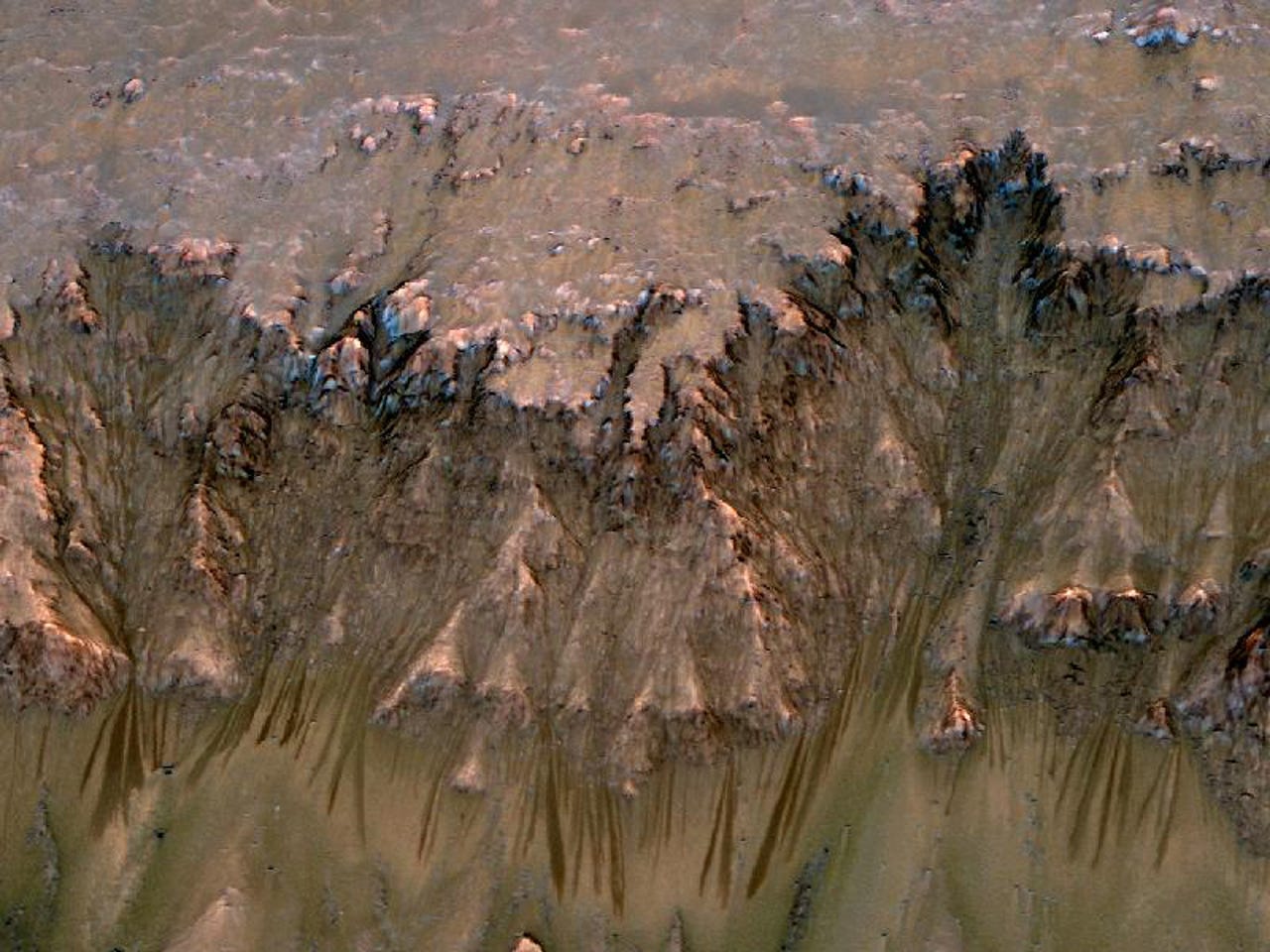Gallery: Photos suggest flowing water on Mars


Several observation from NASA's Mars Reconnaissance Orbiter show evidence of salt water flowing during the warmest months on Mars. The discovery of dark finger-like features that grow and fade during the seasons give new hope to the possible existance of life on the Red Planet.
"The best explanation for these observations so far is the flow of briny water," said Alfred McEwen of the University of Arizona, Tucson. McEwen is the principal investigator for the orbiter's High Resolution Imaging Science Experiment (HiRISE).
More than 1,000 individual flows have been discovered from 0.5 to 5 yards wide with lengths of hundreds of yards long.
This image shows flows that appear in spring and summer on a slope inside Mars' Newton crater.
Previously, on Mars: Gallery: Landing site chosen for new Mars rover Curiosity and What rover Spirit discovered on Mars.
Image credit: NASA/JPL-Caltech/Univ. of Arizona
This before and after look shows the features of possible water flows. Scientists believe it must be salt water as the temperatures encountered would freeze fresh water but would allow salt water to flow as its freezing termperature is lower.
The images show a slope on the Newton crater.
Image credit: NASA/JPL-Caltech/Univ. of Arizona
The image above taken in a colder season shows no evidence of water flow while the evidence does exist in the lower image taken in the Martian summer.
Image credit: NASA/JPL-Caltech/Univ. of Arizona
Here is a similar looking flow in the Horowitz crater.
Image credit: NASA/JPL-Caltech/Univ. of Arizona
NASA explains this map:
"Coloring of the map is coded to concentrations of shallow subsurface water ice found by the Gamma Ray Spectrometer - Neutron Spectrometer on NASA's Mars Odyssey orbiter. Blue, at high latitudes north and south, indicates higher concentrations of water ice (deduced from detection of hydrogen); orange designates lowest concentrations."
"The white squares in the northern hemisphere mark locations of small fresh impact craters that exposed water ice close to the surface and validated the neutron spectrometer data."
Image Credit: NASA/JPL-Caltech/ASU/UA/LANL/MSSS
Possible water flows are shown at the arrow below which faces the Martian equator.
Image credit: NASA/JPL-Caltech/Univ. of Arizona
Potential salty water flows at the Horowitz crater.
Image credit: NASA/JPL-Caltech/Univ. of Arizona
On Earth unfrozen brine in cryopegs and fracture networks provide a home for organisms both within and under frozen rocky materials and the same conditions could very well exist on Mars.
Image credit: NASA/Indiana University
This observation is from a crater in the Terra Sirenum region.
Image credit: NASA/JPL-Caltech/Univ. of Arizona